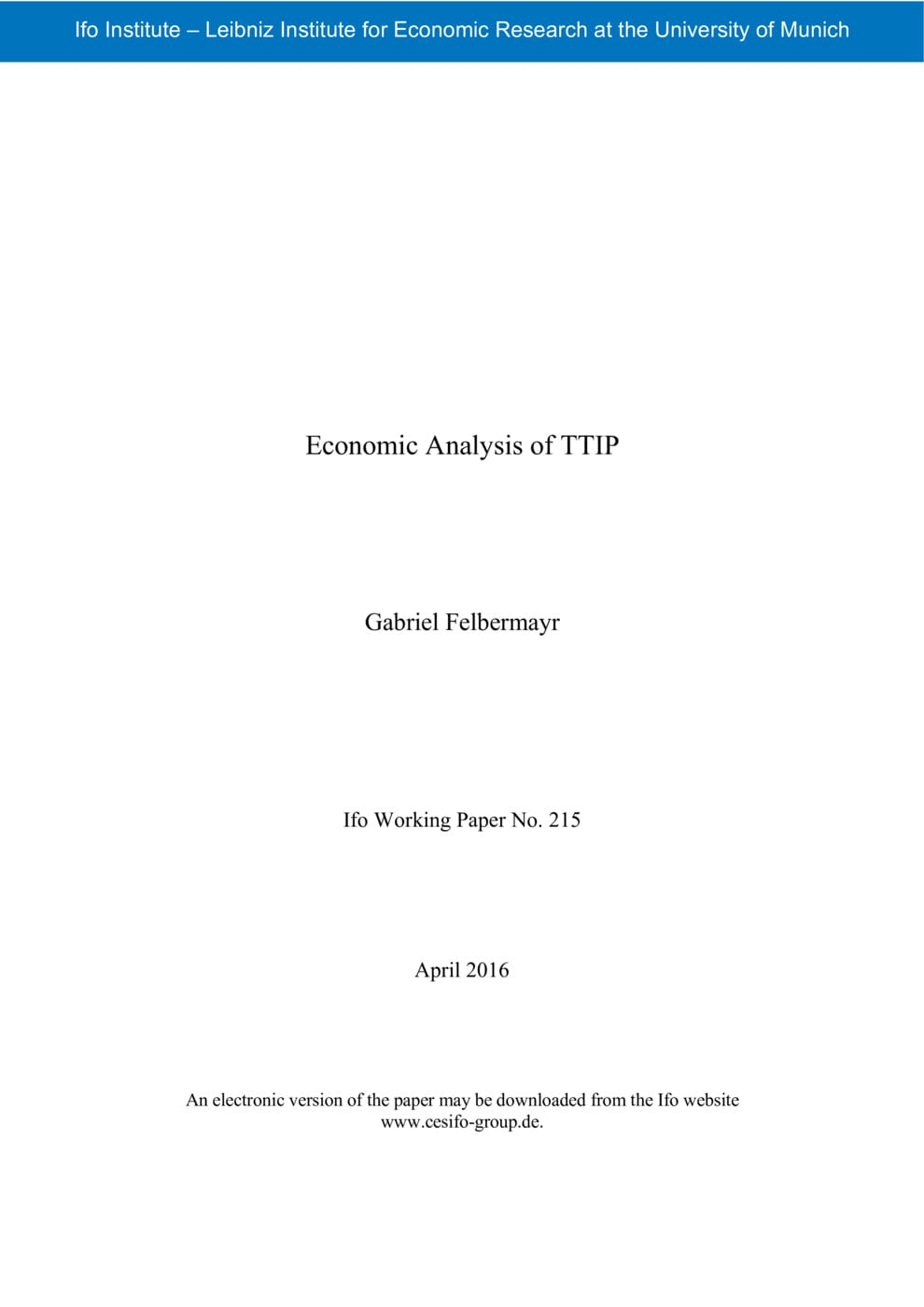Economic Analysis of TTIP
Ifo Institute, Munich, 2016
Ifo Working Paper No. 215

The sheer size of the EU and US economies combined suggests substantial economic benefits from eliminating tariffs, reducing the costs of regulatory divergence, and deepening cooperation. Estimating these gains is difficult: uncertainty concerning modelling choices, data, and scenarios looms large. However, the economic potential of a well-done agreement is substantial. Critics are wrong by dismissing the gains as microscopic. By now, a large number of scholarly studies exist which demonstrate gains on the level of GDP per capita from 0.5 to 4.0% for the EU and a similar span for the US. Almost all of the gains arise from lower non-tariff barriers and in the form of lower prices of final and intermediary goods, higher product variety, and higher productivity. Virtually all EU member states benefit, while TTIP outsiders may lose. Estimates of job gains are even more uncertain, long-run effects are likely to be small and positive. TTIP could increase economic inequality, but the effects will be modest as the structure of comparative advantage between the two partner regions is rather similar. All existing studies rely on static models; neglecting effects on R&D, technology adoption, or human capital formation, they represent lower bounds to the true benefits.